You know you’re in for a tough climb when you meet a couple of oldies on mountain bikes absolutely booking it in the other direction, faces locked in a grimace. And sure enough, the climb to El Mazuco does not disappoint. It’s not that this is the biggest climb I’ve ever attempted – nor the steepest. But it’s the first time I’ve tried to haul myself, my bike, a tent, a computer and a spare pair of sneakers uphill with me in two rear panniers.
I am completely new to adventure cycling, or whatever you want to call it. In the olden times I believe they called it cycle touring. Anyway, I went to Spain in September to get my touring wings, and to catch a stage of La Vuelta as it passed through Asturias – a Principality in northwestern Spain. What I got was six days of glorious weather, delicious food and a crash course in basic Spanish.
If you don’t follow professional road cycling (and I can think of several reasons why you wouldn’t), the Vuelta is a gruelling three-week stage race – the Spanish equivalent of the Tour de France. This year it was won by Fabio Aru, after he took the red jersey from the people’s favourite and all-round surprise package, Tom Dumoulin, on the penultimate day.
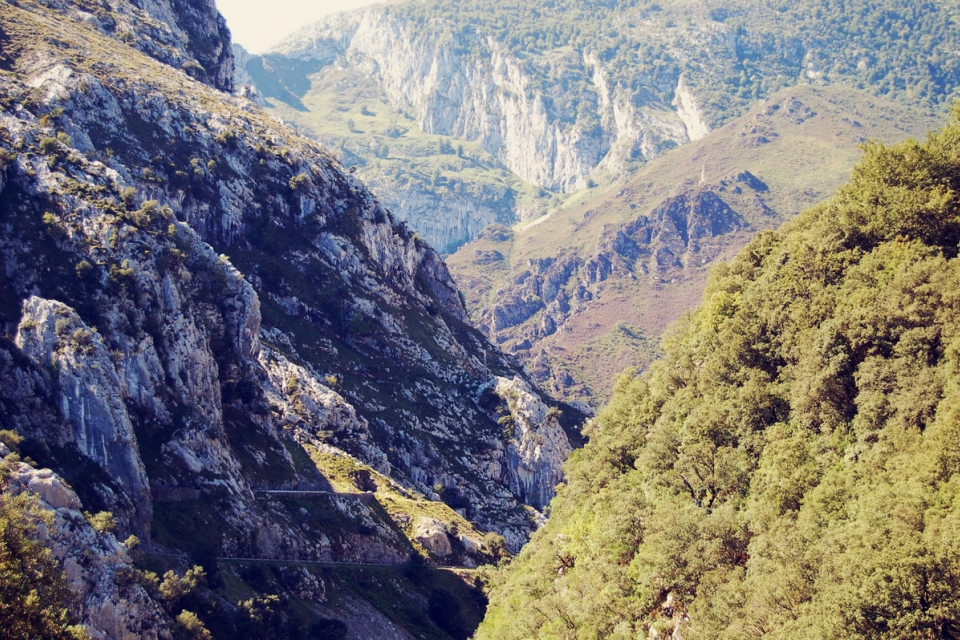
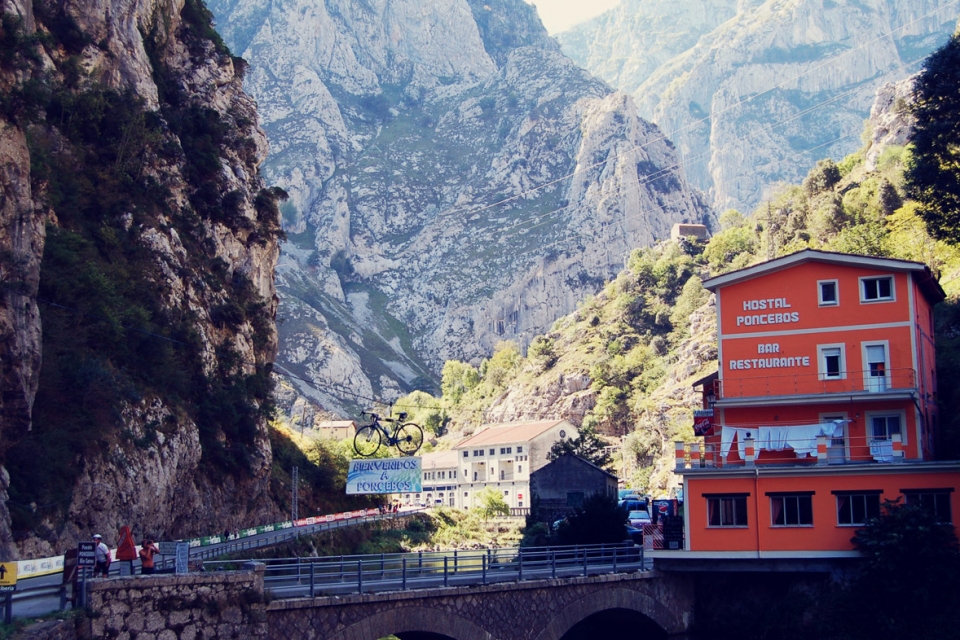
Saturday
SPANISH PHRASE OF THE DAY
_____
“Estoy buscando una bomba de pista”
“I’m looking for a track pump”
To get to the Asturias region, I flew from London to Santander, before taking a bus to a small village called Unquera on the border between Cantabria (the Principality of which Santander is a part) and Asturias, where I would watch the racing.
When I arrived I learned a lot of things very quickly. The first being that English is still not a global language. Second, that it is virtually impossible to achieve anything after midday on a Saturday in Spain. It is actually impossible to find an open bicycle shop after midday on a Saturday in Spain. Which meant, having left my trusty track pump at home, I had no way of inflating my tyres to the proper and practicable pressure I am used to before setting off into the hinterland.
On the plus side, it was after pushing my bike across town for the third time, only to find a third closed sign on the door of a third bike shop that I hatched my plan for the reform of pan-European travel infrastructure: any country that is serious
about promoting cycle tourism should, as a matter of course, provide good quality track pumps at all of its airports. It’s a stipulation of most airlines when carrying bicycles that the tyres must be deflated before check-in so that they won’t pop under changes of air pressure at altitude. As airline requirements go it’s not the stupidest by far, but it does present cyclists with a headache at the other end if they want to inflate their tyres to the 100 PSI I am used to, using the pump they are allowed to carry in their luggage? Remember, no pressurised gas canisters allowed.
In the end I abandoned any hope of finding una bomb de pista, got on the bus, rode to Urquena and did the best I could with a hand pump at the other end. It was slow, but I eventually I made it to Arenas de Cabrales in the Picos de Europa National Park and a campsite there. Home, sweet temporary home. Turns out I was not the only camper who came for the Vuelta, and suddenly an excess of track pumps were at my disposal…
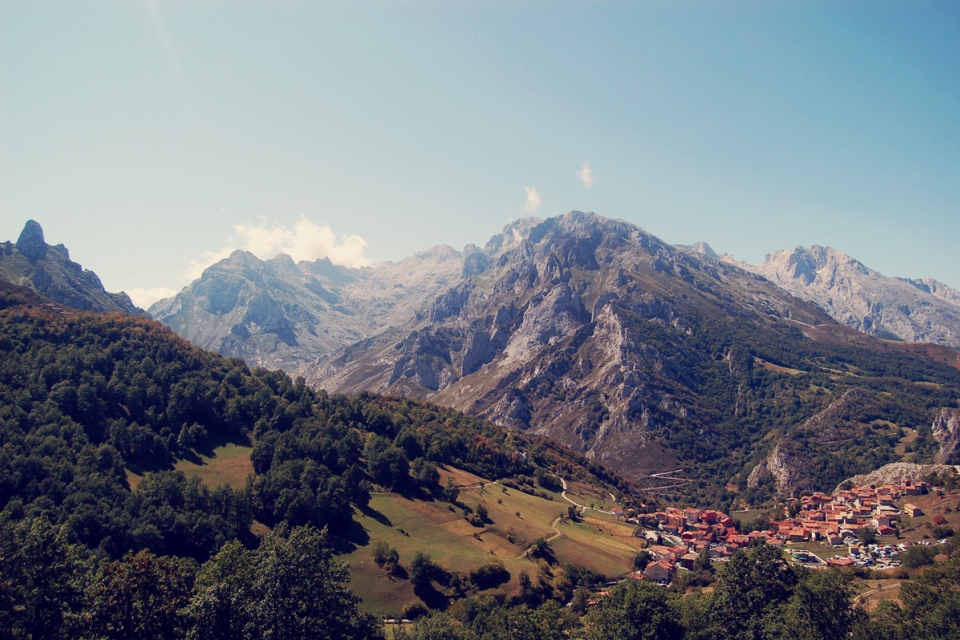
Sunday
SPANISH PHRASE OF THE DAY
_____
“Vamos Purito!”
“Get your arse up that hill, Purito!”
Next morning, with my bike ready to roll, I woke feeling fresh and ready to conquer the climb to Sotres, the same 18km ascent that the Vuelta would follow me up later that afternoon. Sotres is the highest village in the whole of the Picos de Europa, a fitting place for a summit finish of one of the world’s biggest bike races and a really gruelling climb for any amateur. The run from foot to summit includes more than 1,300m of vertical ascent. This was not a day to be bringing panniers along.
Slogging up the lower slopes, the Spanish sun showed no sign of letting up. Taking plenty of opportunities to take a breather, disguised as snapping photos of the other fans riding up. Cries of ‘VENGA’ and ‘VAMOS’ ring out from fellow riders and those making the ascent on foot.
After the village of Sotres itself, the final metres of the stage route kick up to knee-shattering 16% gradients. Most, including me, are forced to get off and push but a few hardy souls – mainly riding mountain bikes in granny gears it has to be said – manage to make the finish line. Baguettes for lunch. Cheese and fresh tomatoes, smothered in thick slices of chorizo. A can of fizzy coke procured from a roadside burger van draped in the blue and gold of the Asturian flag.
A few hours later, local favourite Joaquim ‘Purito’ Rodriguez comes sprinting up the same track I could barely push my loaded bike up, even taking a second to look behind and see how much time he had to enjoy his victory. The crowd goes wild. Bagpipes (yes they’re a thing here too) play loud. Flags flutter
in the wind. The announcer indicates that Dumoulin has held onto the climbers again, staying in touch with the leaders.
The marvellous thing about summit finishes on tiny mountaintops is there’s no space for the team buses. That means after the main men in the peloton have finished, refuelled and put on some nice warm clothing, they start to make their descents back down the way they came, to where their respective buses are parked. They do this while other riders are still climbing up, adding an extra hazard for those in the gruppetto (the group of sprinters that usually forms at the back on hilly stages, who take it easy with the sole intention of finishing within the time limit). Even more exhilarating, once the last rider has crossed the line, the course is opened completely, so you can descend the mountain shoulder-to-shoulder with those very same laggard pros who crossed the line last.
Imagine indignantly looking to your left to see who’s trying to crowd into your line, only to discover it’s Natnael Berhane – MTN-Qhubeka’s Eritrean national champion. Trust me, you let Natnael have the line he wants. Every. Single. Time.
After the star-studded descent it’s a dip in the ice cold Rio Cares at the campsite. Wading in about thigh height before retreating from the fantastically cold waters. Still, that counts as a recuperative ice bath, right? Dinner in the roadside bar near the campsite comes with a whole bottle of wine, for the impossibly low price of €12. Sleep comes very easily.
"A few hours later, local favourite Joaquim ‘Purito’ Rodriguez comes sprinting up the same road I could barely push my loaded bike up, even taking a second to look behind and see how much time he had to enjoy his victory. The crowd goes wild."
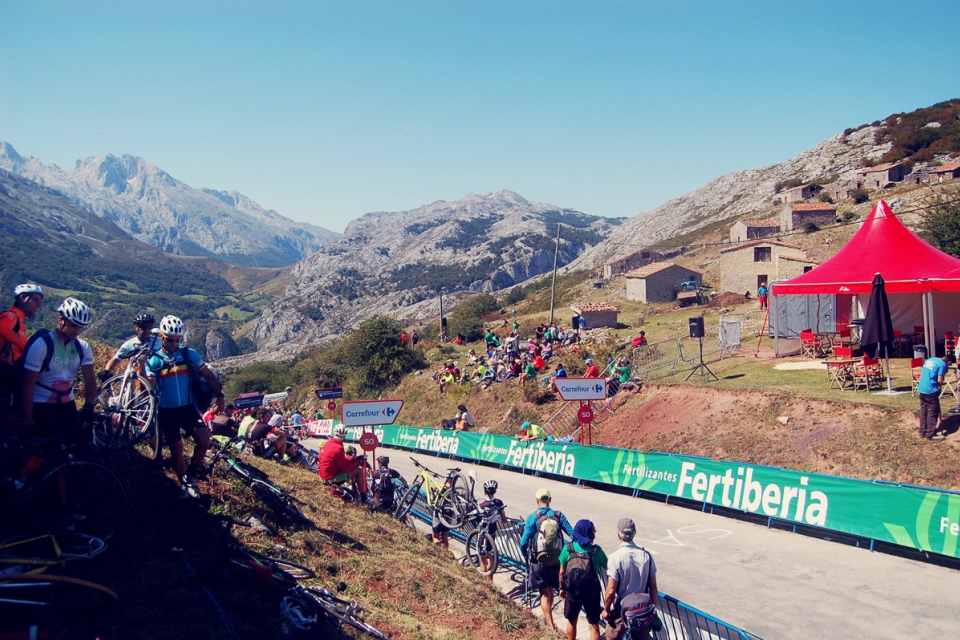
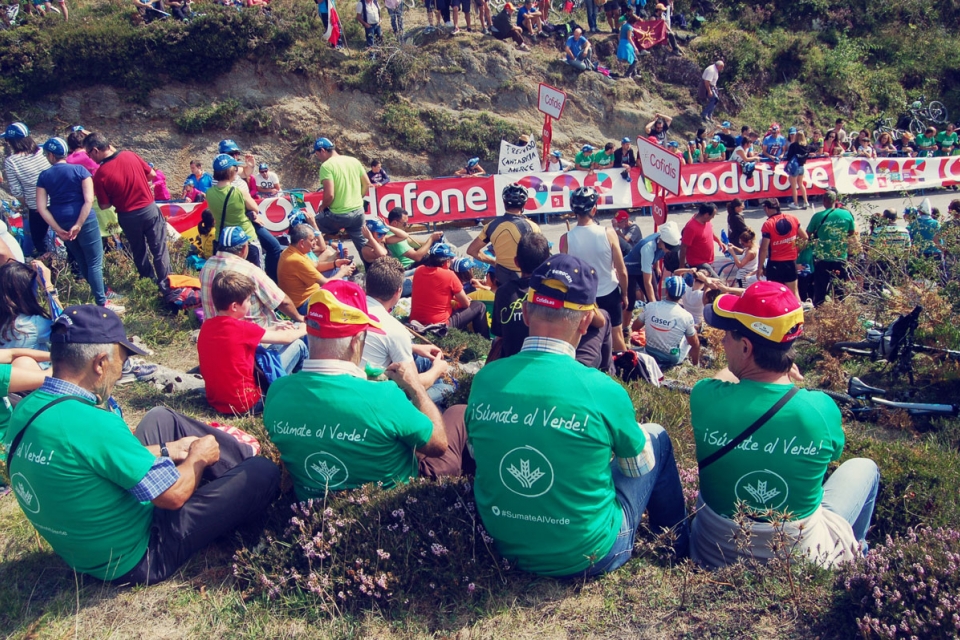
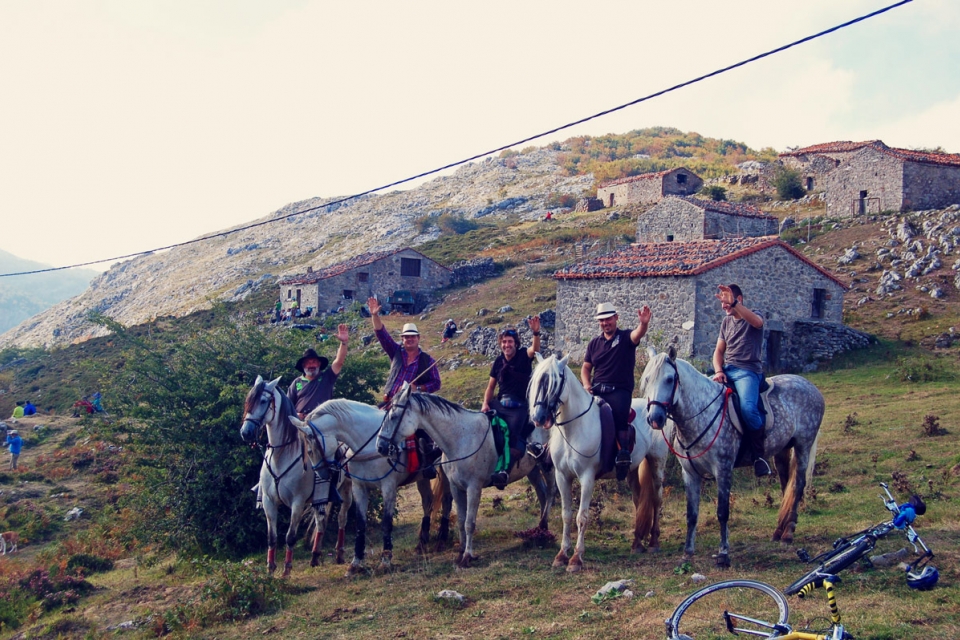
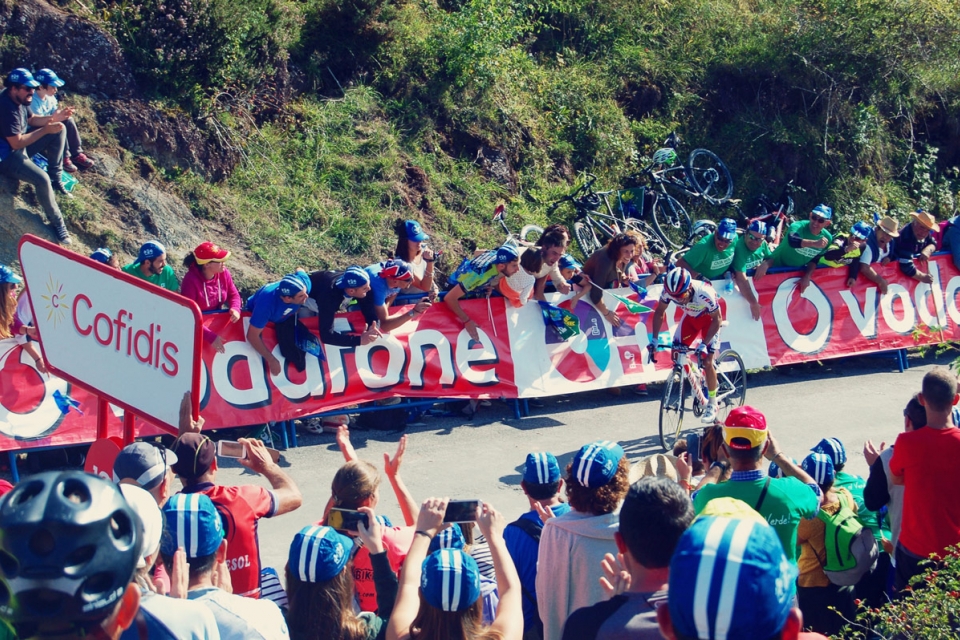
Monday
SPANISH PHRASE OF THE DAY
_____
“Sí, toda esta comida es realmente para mí…”
“Yes, all this food really is just for me…”
In the morning it’s time for the ride back to the coast, the toughest of my five days in the saddle. First thing on the itinerary is to stop for a childish chortle and a quick photo in the town of Póo. Because you’re never too old to enjoy a funny road sign. Then come the towns of Canales, El Escobal and Mere, before turning off the main road and heading onto the lower slopes of the Sierra de Cuera – the range of hills you have to cross to reach the sea from the Asturian interior.
And this is where my story begun, after seeing the two senior citizens fly past me at upwards of 40kph. Creaking and swaying up the never ending, heart-rending climb to El Mazuco, I realised I needed to learn to read maps properly.
In the Spanish Civil War the Republicans and Franco’s rebels fought bitterly for these hills, with the Republicans eventually triumphing – thanks largely to their better understanding of the rugged terrain. It’s still a battle 80 years on, but like all the most worthwhile climbs, the spoils are more than worth the struggle. Near the top in the town of El Mazuco there is another roadside restaurant called Bar Ruxin. They serve steaming hot mounds of patatas bravas, thick slabs of rich
goats cheese and seemingly unlimited bread. After a post-prandial doze in the sun it’s time to cross the top of the range and fall back towards the sea. From the top of the tallest hill in the Sierra, the Alto de la Tornería (471m), you descend around swirling bends on almost-perfect tarmac; the hills drawing aside like great green curtains to reveal the glittering, distant Atlantic. The promise of cold bottled coke and lentil stew. Salt and sunshine fill the air.
The ride into Vidiago is the least scenic part of the trip so far – just an ugly dual carriageway that skirts the coast about half a kilometre inland for almost all of the way between Oviedo and Santander. When you turn left and head down to the sea itself all that is soon forgotten. Crashing blue waves provide the soundtrack to life at Camping La Paz and a second, saline ice bath is required after another 46km and 1,000m of ascent.
A track runs from the campsite to the next town over, with no need to get back on that grizzly road. Dinner out again it is. Another €12, another bottle of wine. Crunching back over the gravel at dusk, imagining the cries of Iberian Wolves – now extinct – that rang out in the Sierra until 2008…
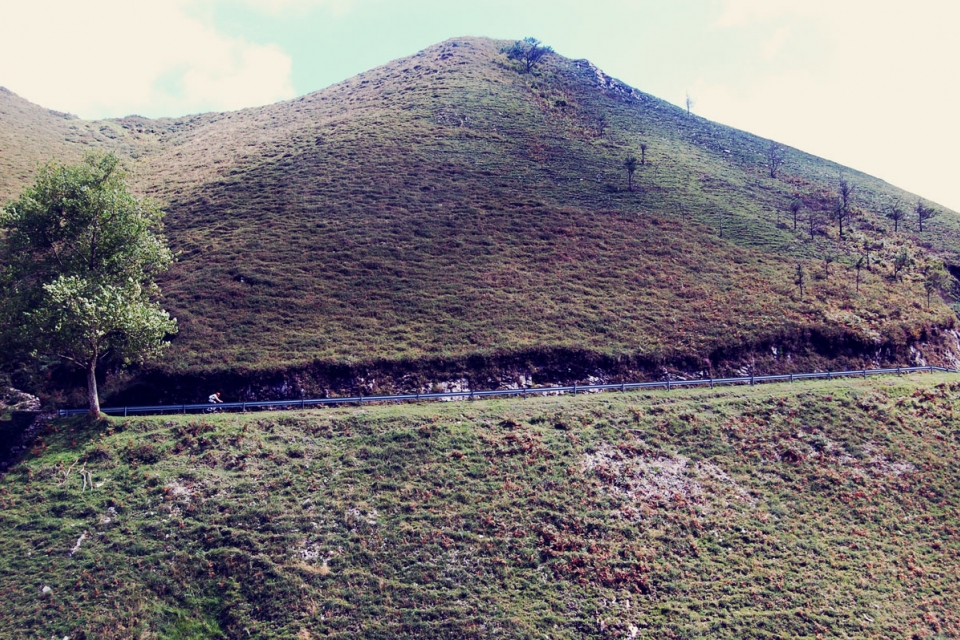
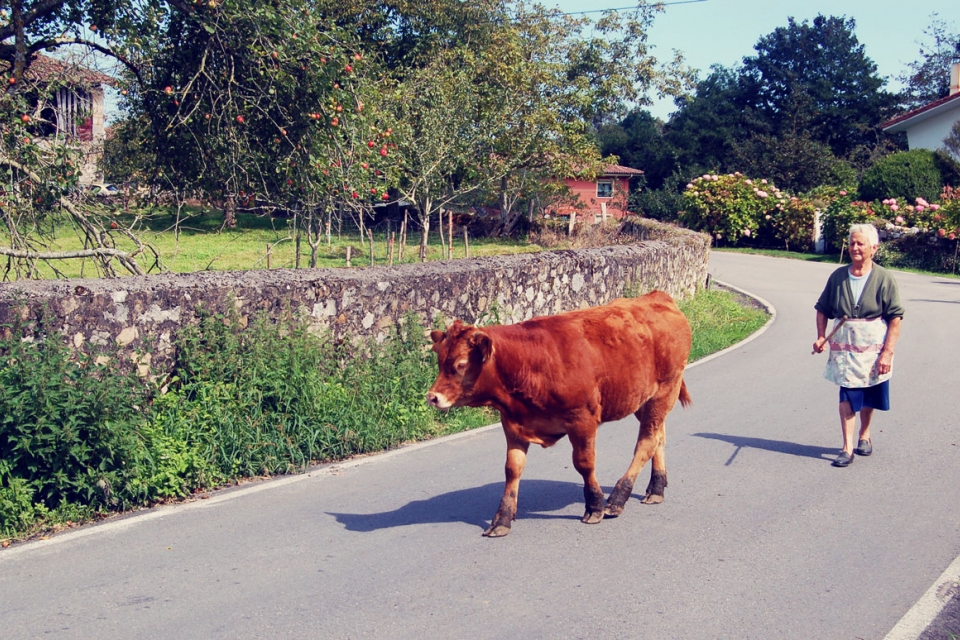
Tuesday
SPANISH PHRASE OF THE DAY
_____
“Días de descanso son para los wimpos”
“Rest days are for wimps”
With the Vuelta taking a rest day, the plan was to follow suit and take the day off, but waking up to the sound of waves and the warming September sun, the prospect of another ride in the hills was irresistible. Off back into the interior, cruising through country lanes, uphill and down dale. No brakes on the corners. Stopping for Cokes in sleepy villages. The bike, free of panniers and rack, absolutely soaring. Back to base. Another splash in the sea.
Another €12. Another bottle of wine.
Wednesday
SPANISH PHRASE OF THE DAY
_____
“Seguir pedaleando”
“Just keep pedalling”
On the final day of my Spanish tour I rode all the way back to Santander, kind of by mistake. Originally I’d thought of riding only as far as Unquera (about 15km) and then hopping on a bus. I’d even bought a ticket. But when, on the outskirts of Unquera, the sign for San Vicente de la Barquera appeared, just another 13km onwards, I thought why not? There’s a bus stop there too and I have my ticket.
At San Vicente, same thing. Torrelevega isn’t that much further to go, and it’s still three hours until the bus is due. Plenty of time. Finally, after stopping in a roadside restaurant to refuel on sugary cakes and watch Tom Dumoulin claw back some seconds in the individual time trial and retake the red jersey for the third time, it just made sense to keep going all the way to Santander. Inspired by Dumoulin’s gutsy performance I rode 88kms in total that day, along the lesser-used coastal road and a few stretches of clifftop gravel.
Walking around the streets of Santander that night, the balmy evening air and the feeling of exhilarated exhaustion will stay with me for a long time. The license to eat morcilla (spanish black pudding) and quaff a flagon of red wine, then buy not one but two huge buckets of helado (ice cream) on the stroll home – secure in the knowledge you already burnt 3,000 calories – is what cycling is really about!
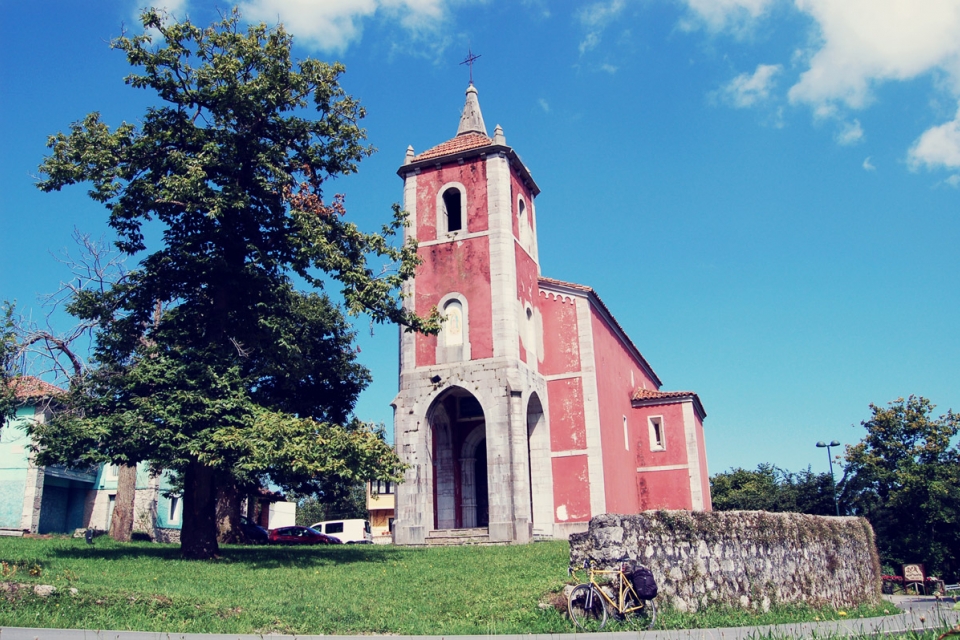
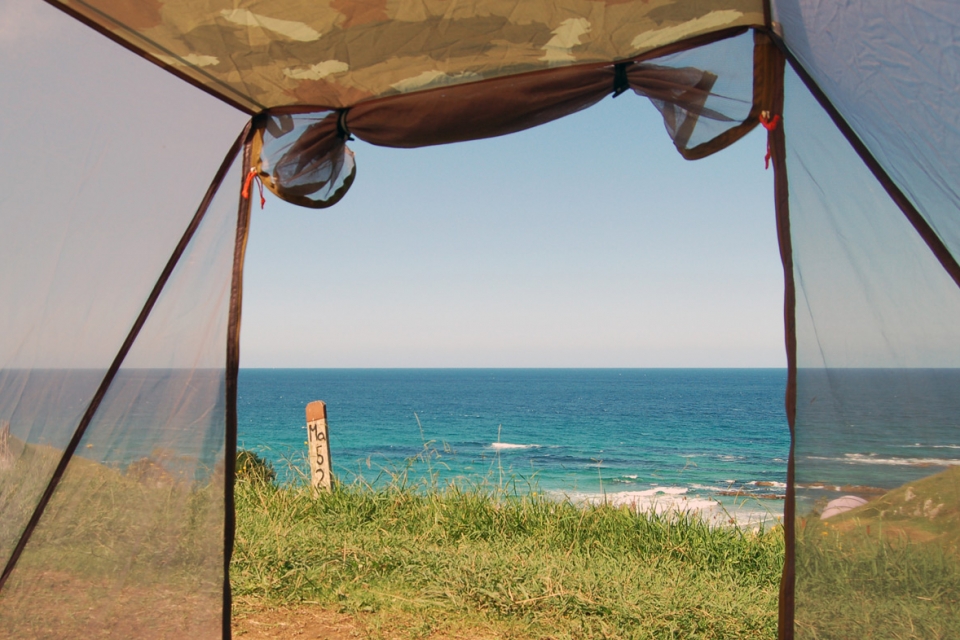
There’s pleasure to be found in almost every bike ride, but the feeling of heading on to somewhere new on a cycle tour – instead of looping back around to go home when you get halfway – is the real joy.
___________
Tom Owen is a cycling writer. He travels the world in search of two-wheeled adventures. He has ridden bikes in Andorra, Argentina, Spain, Vietnam, Italy, Indonesia, Cambodia, Derbyshire and Devon…